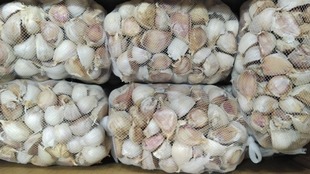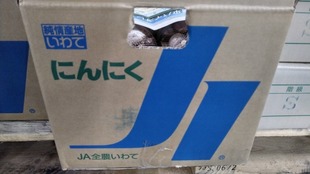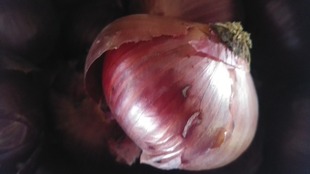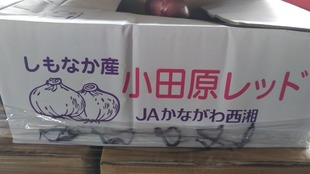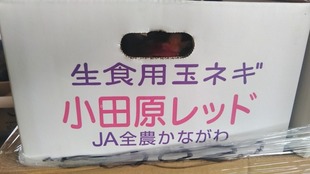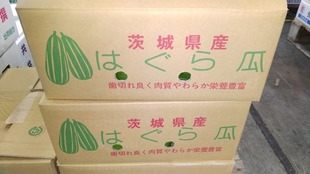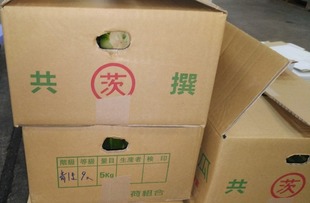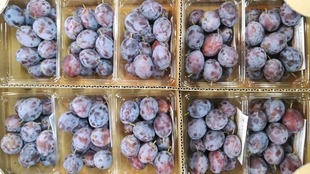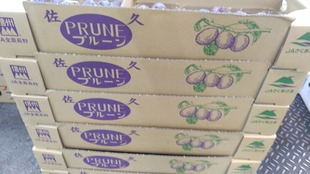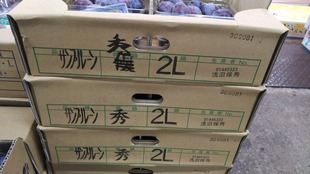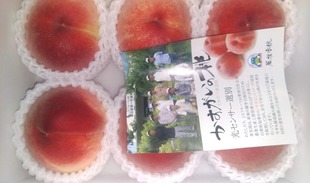Why don't you pick it? You can enjoy the experience of harvesting fresh vegetables carefully grown by farmers in Murayama City. The encounters with people and the many experiences through farming are the food for growth and are a treasure for farmers. This treasure becomes the foundation that supports the roots of farmers. Small crops grow on small foundations. On the big platform, Large crops grow. Agricultural products are truly a mirror of farmers. If you lie about agricultural products, consumers will find out immediately. A sophisticated farmer says that if you don't lie, you'll appear fine.
【Product name】
Suppress cucumber
【Type】
Cucumis sativus L.
【Producing area】
Murayama City, Yamagata Prefecture, Obanazawa City, Oishida Town, Kitamurayama District (JA Michinoku Murayama)
【Origin of name】
Suppression is the cultivation of crops later than the normal harvest and shipping times. It is a method of delaying the growth by hand and delaying the harvesting and shipping times. “Hu” of cucumber is another name for different ethnic groups in ancient China. It has been cultivated since the Heian period via China. “Japanese quince” and “Cuke; huánggua” because they turn yellow when ripe.
【Major features】
JA Michinoku Murayama has introduced cross-border sorting of cucumbers using sorting facilities outside the jurisdiction of JA. Generally, greenhouse cultivation can be divided into two types: “forcing cultivation” and “restraining cultivation”. The purpose of forcing seems to be to speed up the rate of crop growth. Temperature and humidity can be adjusted in the greenhouse. It is possible to artificially create an environment conducive to the growth of excellent crops and harvest them earlier than the original shipping time. However, in winter, as a measure for energy consumption in recent years, a boiler is required, and it seems that the cost tends to be high. According to the White Paper on Energy 2021 by the Agency for Natural Resources and Energy, an external bureau of the Ministry of Economy, Trade and Industry, Japan’s high dependence on fossil fuels is cited as an energy problem facing Japan. In 2019, thermal power generation accounted for 37.1% of the total power generation by power source, 37.1% for natural gas, 31.9% for coal, and 6.8% for oil, which is 75.8% of the total. Energy is indispensable for maintaining daily life and social activities, but Japan is a country with a low self-sufficiency rate. Japan’s self-sufficiency rate was 12.1% in fiscal 2019, which is low compared to other OECD countries (Organization for Economic Co-operation and Development). In fiscal 2010, before the Great East Japan Earthquake, it was 20.2%, and it dropped significantly due to the shutdown of nuclear power plants. It seems to be on the rise in recent years. There are several factors behind Japan’s low self-sufficiency rate, but the main reason is the scarcity of energy resources in Japan. Japan’s energy depends heavily on fossil fuels such as petroleum, coal, and LNG (natural gas), most of which are imported from overseas. In Japan, approximately 90% of crude oil is dependent on the Middle East region, and LNG and coal are heavily dependent on the Asia/Oceania region. If there are any problems in these regions, Japan will continue to be greatly affected in terms of energy security. Therefore, in preparation for emergencies, in addition to stockpiling oil for about 230 days, Japan seems to be aiming for a stable supply by dispersing the importing regions. On the other hand, it seems that the purpose of restraint cultivation is to slow down the growth rate so that it can be shipped after the normal harvest time. Compared to controlled cultivation, it costs less in winter, but it seems that measures against high temperatures may be necessary in summer. By combining forcing cultivation to speed up harvesting and restraint cultivation to slow down harvesting, it seems that long-term shipments can be expected. Cucumbers, which are loved as a food in our daily life, contain more than 95% water and are characterized by their freshness. In fact, this excellent edible produce appears to be immature fruit that comes in a variety of sizes, depending on the cultivar and the length of time it takes to harvest. In the case of restrained cultivation, selecting varieties that have a high rate of female flower formation and gentle side branch development are also important points in considering the tailoring method. In addition, it seems that the cultivation of excellent cucumbers begins with the preparation of soil with fully ripened compost. Watering is essential, but drainage is also important, so it seems that water management is necessary in fields that are converted from paddy fields. Seedlings are resistant to disease, and it seems common to grow them by grafting squash onto rootstocks, and entwining vines with nets on arch-shaped supports. Yamagata City, Yonezawa City, Tsuruoka City, and “Murayama City” are the production areas in the prefecture, and it is cultivated throughout the prefecture. By combining greenhouse cultivation and outdoor cultivation, it seems that the harvest and shipment amount will be secured over a long period from March to December. Obanazawa City, Yamagata Prefecture, is one of the largest watermelon producers in Japan, and the shipment of its specialty, Obanazawa Watermelon, is at its peak, and the response seems to be excellent. On July 22, 2022, at the JA Michinoku Murayama Eastern Watermelon Sorting Facility, watermelons were lined up on a huge belt conveyor, and the same JA inspector checked for scratches, etc., and packed them in boxes one after another with a machine. Start preparing for shipping to the market. “Obanazawa watermelon” is known for its crunchy texture and sweetness with a sugar content of 11 degrees or more, and is very popular. On a busy day, about 40,000 pieces are shipped, and I hear that the work will continue until mid-August. It is a story from relatives, but since the culture and historical development are different along the eastern part and the western part of the Mogami River, the sense of incongruity cannot be wiped out even in modern times, and the conflict between the two districts is deep. It is said that it has a history of being called a political dispute, such as fighting fiercely. “Murayama City, Yamagata Prefecture”, Boundary change with Kahoku Town, Nishimurayama District on February 9, 1990. At the time of the merger, the name of Tateoka, which was the economic center at that time, was nominated as a candidate. However, after discussions with other villages, it was named Murayama with the enthusiasm and anticipation of becoming a nucleated city in the Murayama district, making the most of the generic name of this region. Located in the center of the prefecture, it has a long shape from east to west, 22 km east to west and 15 km from north to south. Surrounded by the Ou Mountains to the east and the Dewa Hills to the west, the Mogami River flows north while meandering in the center, fertile land opens in the basin, the climate is typical inland, and the temperature difference between summer and winter is large. “Cultural property” : Capricornis: 国指定, 特別天然記念物, 地域を定めず指定, 昭和30年2月15日, 石鳥居, 県指定有形文化財(建造物): 楯岡笛田, 昭和30年8月1日, 刀銘正秀 : 県指定有形文化財(工芸品): 楯岡十日町, 昭和38年12月20日, 臥龍のマツ : 県指定天然記念物 : 大字大久保, 昭和30年8月1日, トガクシショウマ : 県指定天然記念物 : 経営区(葉山), 昭和31年11月24日, 愛宕神社のケヤキ林 : 県指定天然記念物 : 楯岡晦日町, 昭和55年1月7日, 河島山遺跡 : 県指定史跡 : 大字河島, 昭和30年8月1日, 祥雲寺宝篋印塔 : 市指定有形文化財(建造物), 楯岡湯沢, 昭和43年9月10日, 宮の下宝篋印塔 : 市指定有形文化財(建造物) : 大字白鳥, 昭和43年9月10日, 宮の下六面幢 : 市指定有形文化財(建造物) : 大字白鳥, 昭和43年9月10日, 富並の六面幢燈籠 : 市指定有形文化財(建造物) : 大字富並, 昭和43年9月10日, 殺生禁断碑 : 市指定有形文化財(建造物), 大字岩野, 昭和56年1月19日, 葉山への道標, 市指定有形文化財(建造物) : 大字岩野, 昭和56年1月19日, 葉山への道標 : 市指定有形文化財(建造物) : 大字湯野沢, 平成10年10月28日, 葉山への道標 : 市指定有形文化財(建造物) : 大字湯野沢, 平成10年10月28日, 葉山への道標(しめ掛けブナ前の道標) : 市指定有形文化財(建造物) : 大字湯野沢, 平成13年1月25日, 湯殿 / 月山 / 葉山三山碑 : 市指定有形文化財(建造物) : 大字湯野沢, 昭和56年1月19日, 中沢不動尊堂 : 市指定有形文化財(建造物), 大字たも山, 昭和63年11月18日, 幾代橋市指定有形文化財(建造物): 大字岩野, 平成18年3月28日, 小松沢観音の絵馬 : 市指定有形文化財(絵画): 大字楯岡字小松沢, 平成24年11月29日, 木造阿弥陀如来座像 : 市指定有形文化財(彫刻) : 楯岡笛田, 昭和48年12月10日, 木造地蔵菩薩立像 : 市指定有形文化財(彫刻) : 大字岩野, 昭和48年12月10日, 木造漆箔阿弥陀如来立像 : 市指定有形文化財(彫刻) : 大字富並, 昭和53年7月3日, 木造彩色地蔵菩薩立像 : 市指定有形文化財(彫刻) : 大字富並, 昭和53年7月3日, 木造漆箔聖観音立像 : 市指定有形文化財(彫刻) : 楯岡湯沢, 昭和53年7月3日, 銅造阿弥陀如来座像 : 市指定有形文化財(工芸品) : 楯岡笛田, 昭和34年11月5日, 銅造観世音菩薩立像 : 市指定有形文化財(工芸品) : 楯岡大沢川, 昭和48年12月10日, 羽黒堂写経 : 市指定有形文化財(典籍) : 大字大久保ほか, 昭和34年11月5日, 紺紙金泥経 : 市指定有形文化財(典籍) : 楯岡新町, 昭和54年2月9日, 最上楯岡元祖記 : 市指定有形文化財(古文書) : 楯岡湯沢, 昭和41年7月25日, 楯岡甲斐守書翰 : 市指定有形文化財(古文書) : 楯岡晦日町, 昭和43年9月10日, 高札 : 市指定有形文化財(古文書) : 中央, 昭和48年12月10日, 宮林主膳正書状 : 市指定有形文化財(古文書) : 楯岡十日町, 昭和51年7月20日, 楯岡甲斐守宛書状 : 市指定有形文化財(古文書) : 楯岡新町, 昭和53年7月3日, 最上徳内伝記 : 市指定有形文化財(古文書) : 楯岡新町, 昭和53年7月3日, 最上徳内書状 : 市指定有形文化財(古文書) : 中央, 昭和53年7月3日, 最上徳内書状 : 市指定有形文化財(古文書) : 楯岡新町, 昭和53年7月3日, 最上徳内筆 : 市指定有形文化財(古文書) : 楯岡新町, 昭和53年7月3日, 最上徳内筆 : 市指定有形文化財(古文書) : 楯岡新町, 昭和53年7月3日, 最上徳内著書 : 市指定有形文化財(古文書) : 楯岡新町, 昭和53年7月3日, 最上徳内著書 : 市指定有形文化財(古文書) : 楯岡新町, 昭和53年7月3日, 伝徳内所用遺品 : 市指定有形文化財(古文書) : 楯岡新町, 昭和53年7月3日, 足利尊氏御教書 : 市指定有形文化財(古文書) : 楯岡新町, 昭和54年2月9日, 「最上徳内書状」 : 市指定有形文化財(古文書) : 中央, 平成24年11月29日, 村山市並びにその周辺からの出土品 : 市指定有形文化財(考古資料) : 大字富並, 昭和34年11月5日, 稲下鹿子踊 : 市指定有形文化財(民俗文化財) : 大字稲下, 平成4年4月22日, 大槇松念寺の回向念佛 : 市指定有形文化財(民俗文化財), 大字大槇, 平成8年2月22日, おくまん様の大スギ, 市指定天然記念物 : 大字湯野沢, 昭和34年11月5日, 頼義のスギ : 市指定天然記念物 : 大字富並, 昭和34年11月5日, 尾上のマツ, 市指定天然記念物 : 大字たも山, 昭和34年11月5日, 三吉山の三吉スギ : 市指定天然記念物 : 大字土生田, 昭和48年4月24日, 山の内のユキツバキ : 市指定天然記念物 : 大字山の内, 昭和51年7月20日, 楯岡馬場の大ケヤキ : 市指定天然記念物 : 楯岡馬場, 平成2年1月25日, 八幡様のイヌザクラ : 市指定天然記念物 : 楯岡馬場, 平成2年1月25日, 白山神社の大スギ : 市指定天然記念物 : 楯岡湯沢, 平成2年1月25日, 向陽寺のキャラボク : 市指定天然記念物 : 大字富並, 平成2年1月25日, 楯山のブナ : 市指定天然記念物 : 楯岡楯, 平成2年10月24日. Mt. Kawashima Ruins : Prefectural designated cultural property historic site designation April 1, 1952. 大字元塩川字前山. Details are unknown, and it is presumed to be the remains of a chasi(柵囲い)by ancient Emishi(蝦夷; エゾ)or a medieval castle.A hill lying on the east bank of the Mogami River, west of the city. The area is a ruin from the Paleolithic Period to the Middle Ages. At the top of the mountain, there are two ruins of a building drawn by a circular moat. A little south of the top of the mountain, there is an old burial mound with a diameter of 24 m around a 4 m-wide moat. The main body of the burial mound is a combination box-shaped sarcophagus, and no other relics have been detected. Near this is the sutra mound of the buried sutra and the gravel stone sutra. A copper-cast warp cylinder housed in a jar of Suzu ware has been discovered. From the southwestern slope of the hillside, stone tools from the late Paleolithic period such as Sugikubo-type knives, and burial tombs from the early and late Jomon period and the late Yayoi Period Tennoyama style have been excavated. Many small itabi monuments and stone pagoda fragments from the 15th century were excavated from this area. There is also a quarry site where stones were cut out. The summit of Mt. Marumori, which continues to the southwest, also has a circle with a diameter of 28 m, and a total of four burial mounds have been confirmed on Mt. Kawashima. Famous as a town that developed as a castle town of Tateoka Castle in the Middle Ages, especially Mr. Tateoka’s 7th generation Mitsushige was active as a powerful vassal of Yoshiaki MOGAMI, and worshiped Yuzawa Castle (Yuzawa City, Akita Prefecture) in Sekigahara. After the battle, he entered Honjo Castle (Yurihonjo City, Akita Prefecture) and gained control of 55,000 koku of rice in Yuri District. When the Mogami clan was converted in 1622, Tateoka Castle was abandoned, and Murayama City was transformed from a castle town to a post town on the Ushu Highway. When Tateoka-inn was opened, the headquarters was set up around the current Murayama Post Office, and the city was opened on the 5th of every month. And there is a big rocky mountain in front of Atago Shrine so as to block the front of the post station, and cut-cutting work has been done many times since the Edo period, and it was the first Yamagata prefectural ordinance that became the current shape It is said that it was after the construction ordered by Michitsue MISIMA. In the current cityscape, there are many places where the atmosphere remains, such as the zelkova group around Atago Shrine and the approach to Mt. Gitoku Honkakuji Temple(牛魂供養 ; 1573, 安蓮社良穏上人龍淵前空大和尚; 浄土宗), but along the highway, old townhouses are disappearing due to the widening of the road and the modernization of the shopping district. Seems to be. The Mogami River flows to the west, and Goten, Mikase, and Hayabusa(舟唄; A barcarolle song composed by NHK in 1936 based on a folk song from Yamagata prefecture. 渡辺国俊, 後藤岩太郎. According to one theory, it was composed with a strong awareness of the Russian folk song “Volga’s Boat Song” ; ヨーイサノマガショー エンヤコラマカセー. 酒田さ行ぐさげ 達者でろちゃ; 新内くずし, 酒田追分), which were once called the three most difficult places for the Mogami River boat transport, are all in the city and are now tourists as river boat rides and are rooted in the area. Varieties shipped at JA Michinoku Murayama : 佐藤錦-Derived from the name of Eisuke SATO of Mikka Town, Higashine City, Yamagata Prefecture. Tenkoen Co.,Ltd., The first Mr. OKADA saw the future and named it in 1928. Breeding from the fruit of “Napoleon cherry” as a mother and “Kidama” pollen. ナポレオンさくらんぼ – A variety that has been cultivated in Europe since the early 18th century. The sweetness stands out with a slight acidity. Ripe Napoleon is more delicious than ripe Sato Nishiki, and it is valuable as an indispensable variety for breeding. 高砂さくらんぼ – Originally, it is an American cherry called “Rockport Picaro”, and it tends to be the earliest among early-maturing varieties. “紅秀峰さくらんぼ” ; 寒河江市島島南-山形県立園芸試験場(現: 山形県農業総合研究センター園芸試験場)に於いて, 昭和54年(1979年)に “佐藤錦” × “天香錦”の, Developed by crossing varieties. 昭和35年(1960年)に, “長瀬運吉”の庭先より, “武田竹三郎”が発見された偶発実生で, 昭和40年(1965年)に命名)に交配して得られた実生から選抜育成し, 平成3年(1991年)に, 品種登録. From Ministry of Agriculture, Forestry and Fisheries variety registration. Application number 3680 Date of application 1990/01/08. Registration number 2893 Date of registration 1991/11/19. The fruit shape is short heart-shaped, the size is large, the color of the fruit is reddish yellow, and it is a sweet fruit that can be harvested from late June to early July in the growing area (Sagae City, Yamagata Prefecture). The size and vigor of the tree are medium. The thickness of the branches and internodes is medium. Flower shape is normal, size is small, number of florets is small, petal shape is slightly oblong, size is medium, pollen is present, calyx. The peduncle is yellow-green, and the peduncle is of medium length. The fruit is large (about 9 g). The color of the peel is reddish-brown, and the coloration is a little rich. The color of the pulp is cream. The pulp is hard, the juice is high, the sweetness is high (about 20 degrees sugar content), and the acidity is low. Mid-season, late April in growing area, 55 days or more after full bloom, late June in growing area, high yield, no physiological fruit drop, medium cracking, long shelf life of fruit Yes, compared to “Sato Nishiki cherries”, the shape of the fruit apex is flat, the infarct is deep and wide, the size of the fruit is large, the hardness of the pulp is hard, and the physiological fruit dropping is less. Compared to “Tenkonishiki cherries”, the infarcts are deeper, the fruit size is larger, and the core and flesh are more sticky. It is said that they can be distinguished from each other by the flat shape of the apex, the sweetness and the lack of sourness. The duration of breeder’s rights is 18 years. The period expires on November 20, 2009, the date of extinction of breeders’ rights. 品種登録者の名称及び住所, 山形県山形市松波, 登録品種育成者, 石塚氏, 佐竹氏, 佐藤氏, 西村氏, 新野氏, 木戸氏, 矢野氏, 髙瀨氏, 安藤氏, 松田氏, 野口氏, 大沼氏, 鈴木氏, 渡部氏, 山口氏, 石黒氏. 紅さやかさくらんぼ – It is a new variety that was selected and cultivated from seedlings obtained by crossing “Sato Nishiki cherry” with “Seneca cherry” and was registered as a variety in 1991, like Beni Shuho cherry. The color is vermilion, and the sweetness and acidity are well-balanced. The cucumber introduced in this article is native to the foothills of the Himalayas in India, and spread from there to Europe, northern China (Northern China route), and southern China (Southern China route). Broadly speaking, it can be divided into white bokyuuri and black bokyuuri, but white bokyuuri seems to account for the majority of varieties cultivated in Japan. I have heard that the skin is thin and has a good crispness, and it accounts for the majority of distribution in Japan. The flesh is juicy and has a lot of moisture, so it is suitable for eating raw as well as for a wide variety of dishes. On the other hand, black cucumbers have a thick skin and a strong flavor, so they are suitable for heated dishes such as stir-fries. It seems that it is only cultivated slightly in Shikoku. In addition, the optimum growing temperature is 18 to 25 degrees Celsius, and it used to be cultivated outdoors as a typical summer vegetable, but thanks to the spread of greenhouse cultivation and the improvement of cultivation techniques, it is now possible to ship year-round.
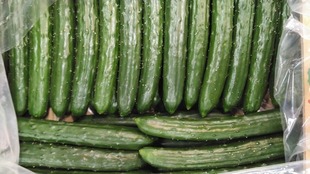
The optimal temperature for cucumber growth is 25-28°C during the day and 13-16°C at night, and cultivation under natural temperature conditions is limited to summer. Looking at the flatlands west of the Kanto region, the harvest season for open-field cultivation is from June to September, and harvesting outside of this period seems to be carried out in greenhouses. Semi-forcing cultivation and forcing cultivation are faster than outdoor cultivation. Conversely, cropping that harvests late is controlled cultivation, and it seems that it is possible to supply throughout the year like tomatoes. Michinoku Murayama Agricultural Cooperative, Tomato Production Department, Murayama Agricultural Center Vegetable Promotion Committee According to Murayama City, this tomato production department is made up of producers of fresh tomatoes within the jurisdiction of the JA Michinoku Murayama Agricultural Center (in Murayama City). Acquire a farmer and carry out environmentally friendly cultivation However, it seems that they are producing high-quality tomatoes that are highly evaluated in the market even in years with large weather fluctuations. Establishment of the production department and certification as an eco-farmer in February 1995 So, 14 people at that time, 2.9 ha. Summer / Autumn cultivation to protect against rain, June 2004, updated in 2009. Technology, management, and approach Practice and ingenuity of environmentally friendly agricultural techniques All members of the tomato production department have acquired eco-farmer certification, and it seems that they are carrying out environmentally friendly cultivation based on the cultivation guidelines created by the production department. 100% eco-farmer acquisition rate
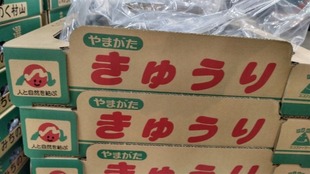
According to Yummy Yamagata, cucumber production starts with preparing the soil with fully ripened compost (made by completely fermenting organic materials such as straw and fallen leaves). Watering is essential, but drainage is also important, so water management is essential for fields that are converted from paddy fields. The seedlings are grown by grafting disease-resistant pumpkins onto rootstocks, and then using the arch-pipe method, in which nets are stretched over arch-shaped supports and vines are entwined. By erecting supports, it seems that crops can be cultivated in a healthy and long-term manner. In addition, in the case of Japan, there are many unexpected events (natural disasters), typhoons, seasonal storms, and long rains during the rainy season, so it seems important to make it easier for humans to grow plants.

This area is located in the northern part of the Murayama Basin between the Ou Mountains to the east and the Dewa Hills to the west. The Mogami River runs through the central area from north to south, bringing rich blessings to local agriculture. (Generic name Yamagata beef 1681) According to a document by Tsunanori Uesugi (1663-1704), the lord of the Yonezawa Domain, 2- to 3-year-old cattle were introduced from the southern region (Iwate Prefecture) into the Okitama region, called ‘Agari-gyu’, and farmed, transported, and harvested. While raising cattle for fertilization, when fattening of cattle was started, the climate was favorable and good beef cattle were produced. Heiferous and castrated Japanese black cattle that have been reared and fattened for the longest period of time and whose final breeding area is in Yamagata Prefecture. Meat quality grade 4 or higher as defined by the Japan Meat Grading Association.), formed a fattening cattle complex boasting the largest number of cattle raised in the prefecture.
